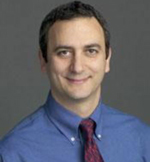January 25, 2010 - By Erin Digitale

Antonio Hardan
Autism researchers at the Stanford University School of Medicine are recruiting twins for an investigation of the role of genetics in shaping the autistic brain.
“We’re doing a twin study to try to sort the impact of genetics on brain abnormalities in autism from the impact of the environment,” said lead scientist Antonio Hardan, MD, who is a child psychiatrist at Lucile Packard Children’s Hospital and associate professor of psychiatry and behavioral sciences at Stanford. Hardan’s team will use magnetic resonance imaging to scan the brains of 120 pairs of twins, some with autism and some without, to look for gene-brain associations.
Previous research has indicated about 75 to 80 percent of autism is explained by genetics, Hardan said. This means that if one member of a pair of identical twins has autism, the other will usually be affected. Having a fraternal (non-identical) twin or other sibling with autism raises a child’s likelihood of an autism diagnosis, but not as much.
Still, no one knows the degree to which genetic factors explain distinct structural and chemical characteristics in the brains of autistic individuals, which may include differences in total brain size and in the corpus callosum and amygdala.
Hardan’s research team will compare the level of similarity in brain structures of identical twins, who share all their genes, with the brain similarities of fraternal twins, who share half of their genes. They will also compare pairs of twins with autism with typically developing (non-autistic) twins to gain insight into which developmental patterns are distinct to autism. They then hope to figure out whether and to what degree there is a correlation between genetic profiles and the brain metabolites and structures of people with autism.
The team is seeking same-sex twin pairs aged 3 to 14. Study subjects can be identical or non-identical twins. The scientists plan to scan 80 pairs in which one or both twins have autism, and 40 typically developing pairs in which neither twin has autism. The scanning method, MRI, is non-invasive and does not involve any radiation exposure. All subjects will also receive standard cognitive and IQ assessments, as well as a battery of diagnostic tests for autism.
Testing will take four to five hours over two consecutive days, and each twin who completes the testing will be compensated $100. Subjects will receive summaries of their cognitive testing results, and confirmation of whether they are identical or fraternal twins. The twins’ families will also be compensated for travel expenses to and from Stanford.
“The scientific value of the study is a major one,” Hardan concluded. “We don’t know how much is inherited in terms of specific brain abnormalities in autism, and we also need to learn more about how environmental factors play into the development of the autistic brain. This study will help us gain that understanding.”
Hardan’s collaborators on the study include Joachim Hallmayer, MD, associate professor of psychiatry and behavioral sciences, and Allan Reiss, MD, professor of psychiatry and behavioral sciences and of radiology. Reiss also directs the Center for Interdisciplinary Brain Sciences Research at Stanford and practices as a child psychiatrist at Packard Children’s.
To obtain more information or volunteer for the trial, contact the study coordinator, Sue Cleveland, at (650) 723-7809 or cleve@stanford.edu.
About Stanford Medicine
Stanford Medicine is an integrated academic health system comprising the Stanford School of Medicine and adult and pediatric health care delivery systems. Together, they harness the full potential of biomedicine through collaborative research, education and clinical care for patients. For more information, please visit med.stanford.edu.